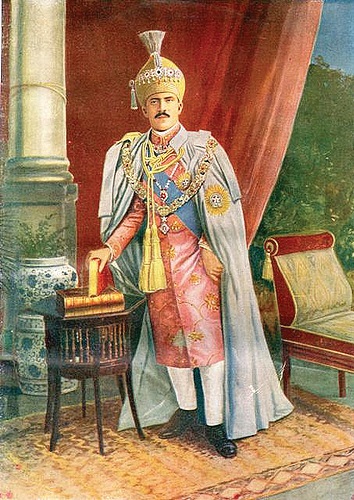Hyderabad, TELANGANA (formerly) HYDERABAD STATE :
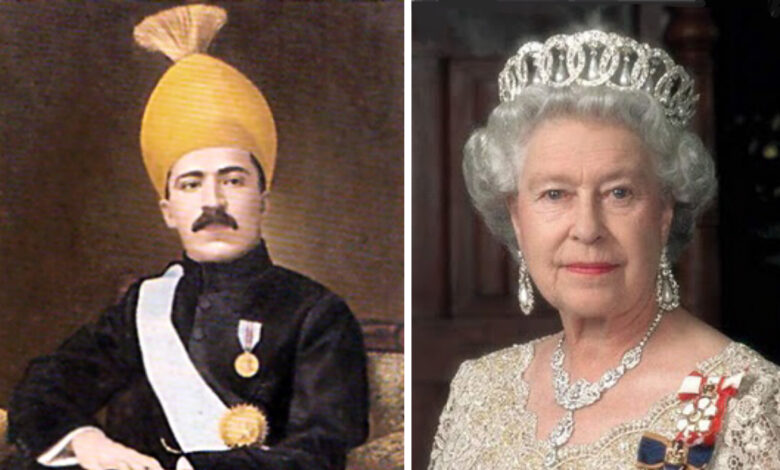
Imaginative cuisine, stylish wardrobes, magnificent palaces, and an opulent lifestyle. These are just a few things that the Nizams of Hyderabad are known for. Well, there’s one more thing: spectacular jewelry.
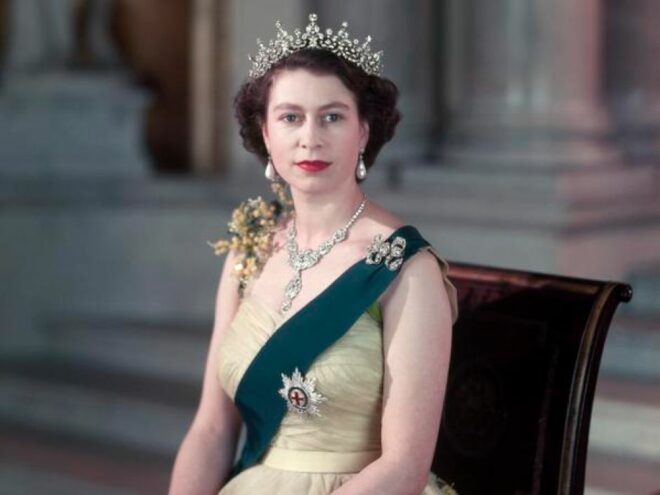
Most people already know that the last Nizam, Mir Osman Ali Khan was one of the wealthiest men in the history of the world. So, it comes as no surprise that he owned a fabulous collection of jewelry – diamonds, gold ornaments, and precious stones.
Almost all this collection was purchased by the Government of India, which arranges its exhibition from time to time.
However, the most fitting exhibition of the Nizam’s jewelry occurs, albeit unwittingly, when Queen Elizabeth II, the Queen of the United Kingdom, wears the spectacular Cartier diamond necklace. It was gifted to her by the 7th Nizam on the occasion of her wedding to Prince Philip of Greece and Denmark on 20th November 1947. He had also gifted her the “Hyderabad Tiara” which had a design based on English roses with 3 detachable floral brooches, all made of diamonds and set in platinum.
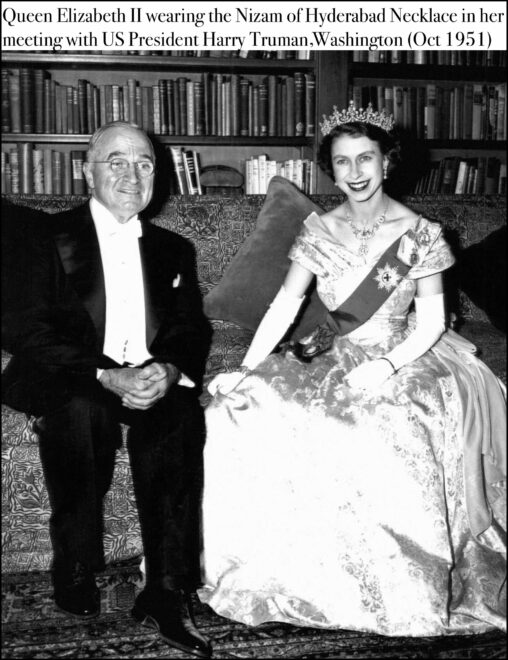
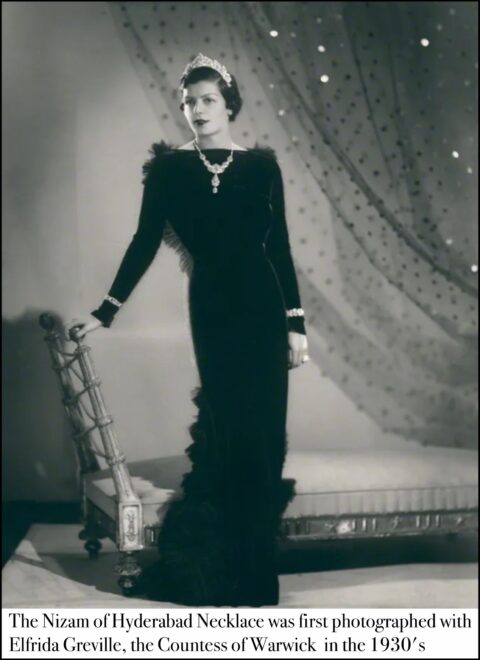
The aptly named Nizam of Hyderabad Necklace is also a floral piece made of diamonds that are set in platinum.
The British art historian, Hugh Roberts who authored the best-selling book “The Queen’s Diamonds”, describes it in his book as: “The pavé-set centre with detachable double-drop pendant incorporating 13 emerald-cut diamonds and a pear-shaped drop; the chain of 38 brilliant-cut open-back collets with an elongated oval brilliant-set snap”.
The Nizam, in his generosity, reportedly instructed Cartier to let the bride (then Princess Elizabeth) choose whatever she desired from their collection. The princess then chose the necklace and the matching floral tiara. She is not its first owner, however. Cartier made the necklace in 1935, sold it and then reacquired it from the first buyer in 1936. One of its earliest pictures is of Elfrida Greville, the Countess of Warwick who wore it for a portrait in the 1930s.
But the piece has remained a mainstay in the Queen’s jewelry collection. It appears to be one of her favorites as she has worn it on many official engagements, for instance on her first ever trip to Washington in October 1951 where she met President Harry Truman. She can also be seen posing in it for official portraits that would be used on currency bills like the Bahamas Dollar. She still wears it on important occasions.
Of late there has been a renewed interest in the necklace among jewelry enthusiasts when the Duchess of Cambridge Kate Middleton was photographed wearing it on at least two occasions. It was lent to her by the Queen as the duchess is her grand daughter-in-law due to her husband Prince William. It may now be safely assumed that the necklace has passed on from being a personal wedding present to a family heirloom and will adorn the subsequent generations of British royalty.

Dr Mohammed Najeeb Shahzore is a specialist physician based in Kuwait with an interest in Hyderabad’s history & culture.
source: http://www.siasat.com / The Siasat Daily / Home> News> Hyderabad / by Dr. Mohammed Najeeb Shahzore / September 26th, 2021
